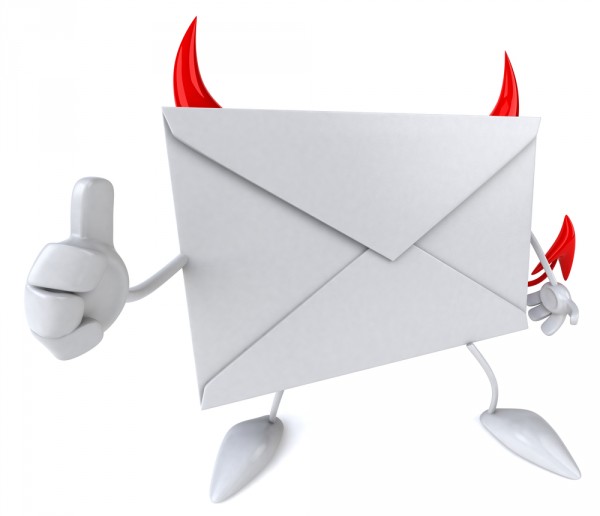Malicious spam levels hit two year high

A new report from Kaspersky Lab reveals that its products blocked 73,066,751 attempts to attack users with malicious attachments during the third quarter of this year.
This represents the largest amount of malicious spam since the beginning of 2014 and is a 37 percent increase compared to the previous quarter. The majority of the blocked attachments were ransomware trojan downloaders.
"Spam is often just unwanted advertising, but it has a darker side too," says Daria Gudkova, acting head of content analysis and research at Kaspersky Lab. "Criminals use spam to distribute malware and exploit users' vulnerability, convincing them to hand over their money and personal details. The majority of malicious spam emails during the past quarter contained ransomware, which is yet more proof of the rising epidemic of this type of malware. We urge you not to open any suspicious attachments or click on unknown links -- the website could be compromised - because all of these can result in device infection".
Among other findings are that India has moved to the top of the list of countries generating spam, with 14 percent of spam emails sent from the country. This represents a 4.4 percentage point increase on the previous quarter. Vietnam retained its second place with 11 percent, followed by the USA on 8.88 percent, moving down from first to third place.
Germany remains the top target country for spammers, with 13 percent of users affected by spam mailshots, down 1.48 points on Q2. Japan ended the quarter as the second most favored target on 8.76 percent, up 2.36 points while China on 8.37 percent moved down from second to third.
In addition to malware spam is being used to deliver scams. Popular email headers in Q3 included, 'Register to test & keep a new iPhone 7S!' and 'Wanted: iPhone 7S Testers!' All people had to do was provide their postal and email addresses, and other personal information, and pay for the postage in return for the products to be sent to them - which of course they weren't.
Gudkova adds, "Fraudsters often use big new stories to trick people. The iPhone 7 example is just one of many that were used during the quarter. As the saying goes -- free cheese is only found in a mousetrap. We urge people to stay vigilant, to treat emails from unknown senders with caution and to make sure in advance that they are using a reliable AV solution".
The Kaspersky Lab anti-phishing system was triggered 37,515,531 times on the computers of its users -- a 15 percent increase compared to Q2, 2016. The country where the largest percentage of users were affected by phishing attacks was once again China (20.21 percent), followed by Brazil (18.23 percent) and UAE (11.07 percent).
Banks top the ranking of organizations attacked by phishers, with a share of 27 percent, followed by 'global internet portals' on 21.73 percent and 'online-shops' on 12.21percent.
You can find out more about the findings in the full report on the Kaspersky SecureList site.
Photo Credit: Julien Tromeur/Shutterstock
